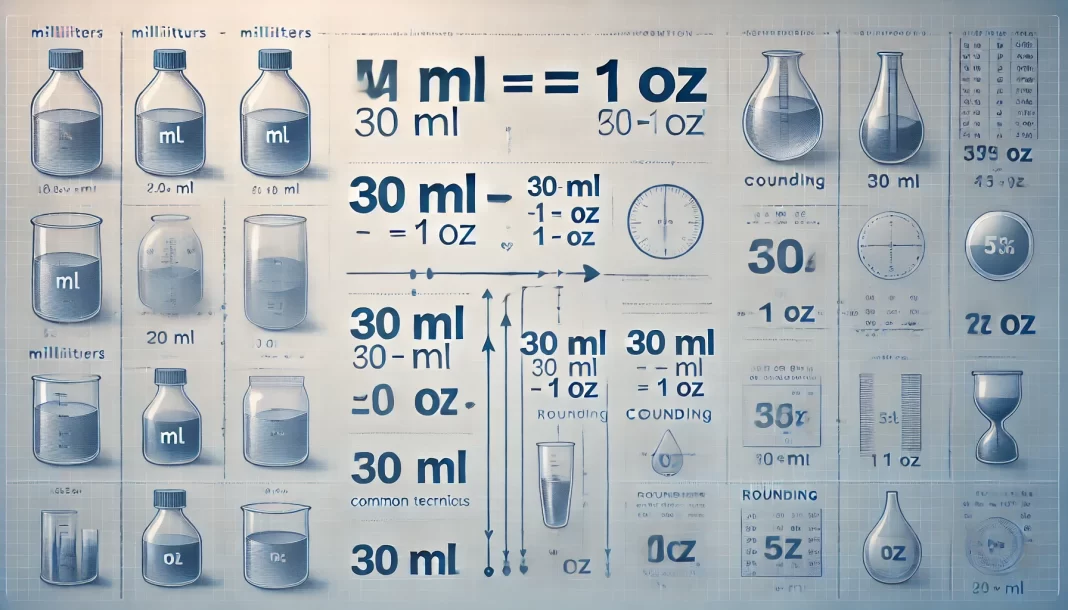Rounding measurements like milliliters (ml) to ounces (oz) may seem straightforward, but for pharmacy students preparing for the NAPLEX 30, understanding these conversions is crucial. Proper rounding not only ensures precise dosing but also helps you excel in this key area of the exam. In this post, we’ll cover how to round ml to oz accurately, common pitfalls, and how mastering this skill can give you an edge in your NAPLEX 30 prep.
Why Rounding ML to OZ Matters for NAPLEX 30
When preparing for the NAPLEX 30, you’ll encounter various calculations, including conversions between ml and oz. Understanding these conversions is more than just memorizing numbers; it’s about patient safety. In practice, precise calculations preevent overdosing or underdosing, ensuring the best care for patients. By mastering rounding techniques, you’ll be better equipped for the NAPLEX and your future pharmacy career.
The Basics: How to Convert ML to OZ
Before diving into rounding, it’s essential to know the basic conversion rate between ml and oz. The standard conversion is:
1 ounce (oz) = 29.5735 milliliters (ml).
For simplicity in calculations, this number is often rounded to 30 ml. This makes it easier to convert and remember, especially during exam conditions. However, knowing the precise conversion can be helpful for more detailed questions on the NAPLEX.
Rounding Techniques: When to Round Up or Down
Rounding ml to oz can vary depending on the context of your calculation. Here’s a quick breakdown:
Rounding for Simplified Calculations: If the problem allows for some leeway in precision, rounding 29.5735 ml to 30 ml per oz is standard. This makes mental math quicker and is often sufficient for non-critical calculations.
Rounding for Precision: In some cases, especially when dealing with smaller volumes or pediatric doses, using more precise conversions like 29.6 ml per oz can be important. Here, rounding to two decimal places ensures you stay within safe margins.
NAPLEX Context: During the NAPLEX, if a problem specifies rounding rules (e.g., round to the nearest ml or tenth), always follow those instructions. For instance, if you need to convert 90 ml to oz, using the rounded 30 ml per oz makes the math straightforward: 90 ml ÷ 30 ml/oz = 3 oz.
Common Mistakes to Avoid
Even with a good understanding of conversions, it’s easy to make mistakes. Here are some pitfalls to watch out for:
Ignoring Significant Figures: When asked for precise conversions, don’t forget to keep track of significant figures. For example, rounding too early in a calculation can throw off your final answer.
Misinterpreting Rounding Instructions: The NAPLEX may specify when to round up or down. Always read the problem carefully and follow the given instructions to avoid losing points.
Over-Rounding: Using 30 ml per oz is handy, but it may not be appropriate for every calculation. For precise medication dosing, it’s best to stick closer to 29.5735 ml per oz unless otherwise stated.
How Does This Compare to the Competition?
Most guides on rounding ml to oz focus on the basics of conversion but fail to dive into the nuances that the NAPLEX tests. Here’s how this post stands out:
Detailed Precision Tips: While many resources stick to a flat 30 ml per oz conversion, we’ve highlighted the importance of knowing when to use precise figures like 29.6 ml. This is a crucial skill for those aiming for top scores.
Real-World Application: We’ve connected rounding techniques directly to real-world pharmacy practice, showing how precision matters for patient safety. This link is often missing in other guides.
NAPLEX-Specific Advice: Unlike general resources, this guide tailors its tips for the NAPLEX context, emphasizing the exam’s expectations for rounding and conversion accuracy.
Practical Examples: Rounding in Action
Let’s look at a couple of practical examples to solidify your understanding:
Example 1: Convert 45 ml to oz.
Using the approximate conversion (30 ml/oz):
45 ml ÷ 30 ml/oz = 1.5 oz.
Using the precise conversion (29.5735 ml/oz):
45 ml ÷ 29.5735 ml/oz ≈ 1.52 oz.
Here, you might round to 1.5 oz depending on the rounding rules provided in the exam question.
Example 2: Convert 100 ml to oz using both methods.
Approximate method:
100 ml ÷ 30 ml/oz = 3.33 oz (round to 3.3 oz).
Precise method:
100 ml ÷ 29.5735 ml/oz ≈ 3.38 oz.
In this case, rounding to the nearest tenth might give you 3.4 oz.
These examples demonstrate how slight differences in rounding can impact your calculations, especially in an exam setting.
Wrapping It Up: Why Rounding Matters Beyond the NAPLEX
Mastering rounding ml to oz isn’t just about passing the NAPLEX—it’s about developing skills that will carry over into your daily pharmacy practice. By understanding the nuances of conversions and how to round accurately, you’ll be better prepared to handle complex calculations, whether in an exam or in the real world. And remember, practice makes perfect, so take time to work through examples until you feel confident.
By focusing on these details, you’ll have a strong advantage not only for your NAPLEX 30 but also in delivering safe, effective patient care.



